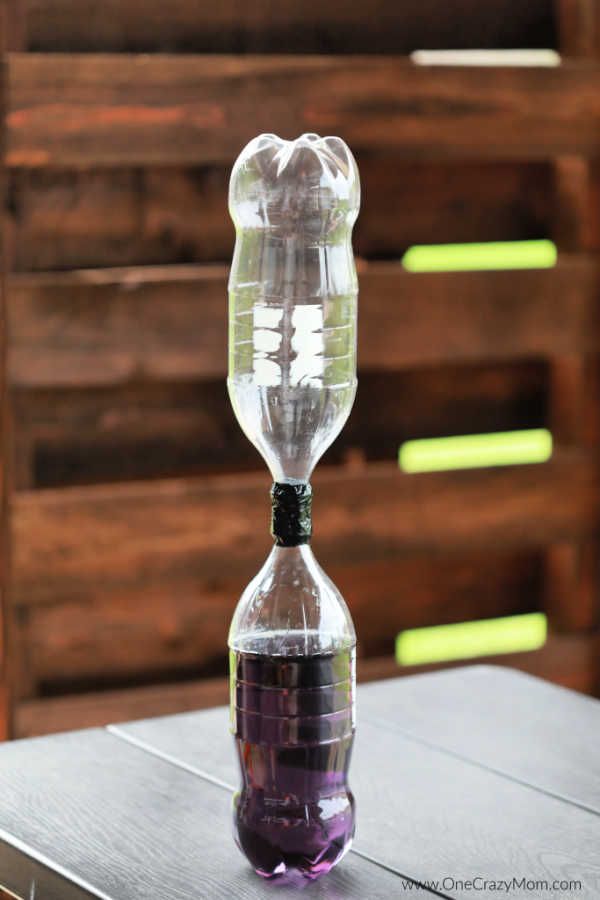**How to Make a Tornado in a Bottle?**
Have you ever wondered how tornadoes form? These powerful and destructive natural phenomena are fascinating to study. While we can’t create a real tornado, we can simulate one in a bottle! Making a tornado in a bottle is a fun and educational experiment that allows us to understand the science behind these mesmerizing weather events. In this article, we will guide you through the steps of creating your own tornado in a bottle, explore the science behind it, and answer some frequently asked questions.
**What You Will Need**
Before we dive into the process, let’s gather the materials you’ll need to make a tornado in a bottle:
1. A clear plastic bottle with a tight-fitting lid (such as a soda or water bottle)
2. Water
3. Dish soap or liquid detergent
4. Food coloring (optional)
5. Glitter or small beads (optional)
**Creating Your Tornado**
Now that you have your materials ready, let’s get started on making your very own tornado in a bottle. Follow these simple steps:
1. Fill the plastic bottle about three-quarters full with water. Leaving some empty space in the bottle is crucial for the tornado effect to occur.
2. Add a few drops of dish soap or liquid detergent to the water. This will help create the swirling effect in the tornado.
3. If desired, add a few drops of food coloring to the water. This step is optional but can make your tornado more visually appealing.
4. Add a sprinkle of glitter or small beads to the water. Again, this step is optional but adds some extra visual interest to your tornado.
5. Screw the lid tightly onto the bottle, ensuring that it is sealed tightly. You don’t want any leaks during the experiment.
6. Hold the bottle upright with one hand on the bottom and the other hand on the top lid.
7. Swirl the water in a circular motion for a few seconds to create a vortex in the bottle. This swirling motion mimics the rotation of a real tornado.
8. Once you have built up a good swirling motion, quickly turn the bottle upside down, keeping it in an upright position.
9. Observe as the water continues to swirl, resembling a miniature tornado in the bottle.
**The Science Behind It**
Now that you have successfully created a tornado in a bottle, let’s delve into the science behind this fascinating experiment. The tornado effect is achieved through the principles of centripetal force and air pressure.
When you swirl the water in the bottle, centripetal force comes into play. Centripetal force is the force that acts toward the center of a rotating object, keeping it moving in a circular path. As you swirl the water, centripetal force pushes the water towards the center, forming a vortex (or spiral) in the bottle.
The dish soap or liquid detergent added to the water reduces the surface tension, allowing the water molecules to bond with and slide against each other more easily. This creates a smoother flow, enabling the water to move around the bottle in a spinning motion.
When you flip the bottle upside down, gravity pulls the water downwards while air pressure inside the bottle tries to equalize with the air pressure outside. As the water rushes down, the air pressure inside decreases, creating a lower-pressure area. This lower-pressure area allows air from outside the bottle to push into the bottle, maintaining the swirling motion of the water.
**Frequently Asked Questions**
Frequently Asked Questions
Now that you know how to make a tornado in a bottle, let’s address some common questions you might have:
Q: Can I use any type of bottle for this experiment?
A: It is best to use a clear plastic bottle with a tight-fitting lid to observe the tornado effect more clearly. Soda or water bottles work well for this experiment.
Q: Is it necessary to add food coloring and glitter to the water?
A: No, adding food coloring and glitter is optional. These additions simply enhance the visual appeal of the tornado and make it more captivating to watch.
Q: Is this experiment safe for children to perform?
A: Yes, this experiment is safe for children to do under adult supervision. However, make sure to handle the bottle with care to prevent spills and injuries.
Q: Can I make a tornado in a bottle without using water?
A: Water is an essential component in this experiment as it provides the medium for the swirling motion. Without water, you won’t be able to observe the tornado effect.
Q: What other experiments can I do to learn more about weather phenomena?
A: There are many fascinating experiments you can try to learn about weather phenomena. You can explore lightning by creating a static electricity generator or simulate rain by making a cloud in a jar.
**Final Thoughts**
Creating a tornado in a bottle is a fantastic way to learn about the science behind tornadoes and engage in a hands-on experiment. It’s a great activity for both children and adults, providing a visual representation of the powerful forces at play in our atmosphere. So go ahead, give it a try, and watch your very own tornado come to life in a bottle! Just remember to have fun and stay curious as you explore the wonders of the natural world.
